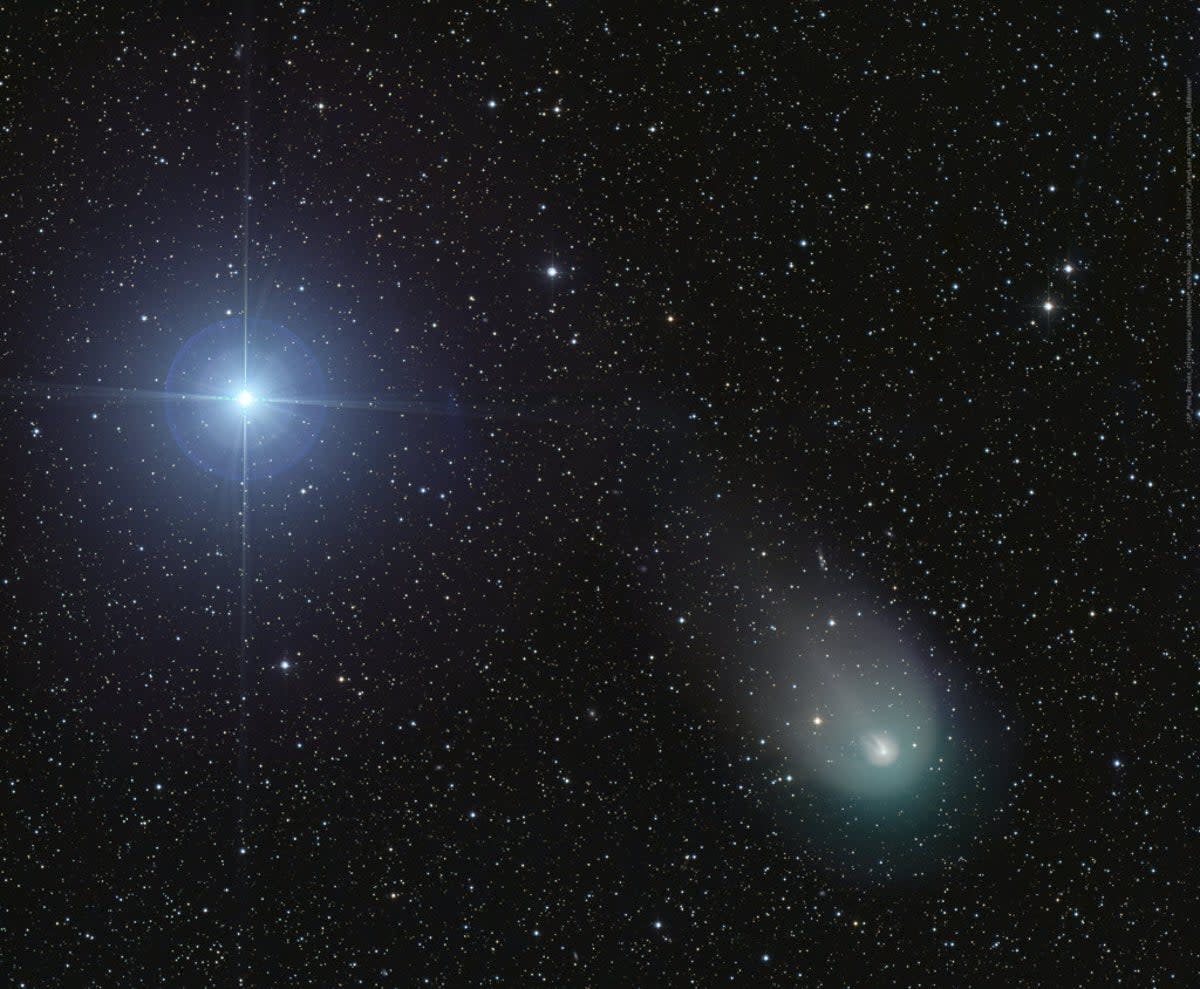Comet bigger than Everest could be visible to naked eye during Earth fly-past

- Oops!Something went wrong.Please try again later.
- Oops!Something went wrong.Please try again later.
A Halley-type “devil’s comet” larger than Mount Everest could be visible to the naked eye for stargazers as it passes by the planet in the coming weeks.
The comet 12P/Pons-Brooks, with a diameter of about 30km (20 miles), completes an orbit every 71.3 years. It would make its closest approach to the Sun on 21 April.
Named after French astronomer Jean-Louis Pons who spotted the object first in 1812, and British-American astronomer William Robert Brooks who observed it in its next passby in 1883, the comet has received many nicknames.
It was recently called the “Millennium Falcon” comet for its resemblance to the fictional starship in Star Wars during a recent observation, as well as the name “devil’s comet” after an outburst on its surface spotted last year was found to give it a horned shape.
These bursts likely originate from the carbon monoxide and dioxide outgassing in the comet’s core that escape when solar radiation weakens and fractures its crust.

“Pressure from sunlight (radiation pressure) has caused the gas and dust surround the comet to assume a horseshoe shape, which some observers say reminds them of a devil with horns,” Bill Cooke, lead for the Meteoroid Environment Office at Nasa’s Marshall Space Flight Center in Alabama explained in January.
The comet has already been spotted by stargazers in its current approach, and could become much brighter and visible to the naked eye in the coming weeks in parts of the UK without light pollution affecting the skies.
On 21 April, it will reach the closest point in its orbit around the Sun, but due to icy eruptions on its surface it continues to experience sudden flare-ups in brightness that could make it more visible.
It is expected to reach its maximum brightness next month – a few days before the total solar eclipse on 8 April – and the closest approach to Earth in June.
Comet Pons-Brooks in Northern Spring
As spring approaches for northern skygazers, Comet 12P/Pons-Brooks is growing brighter. Currently visible with small telescopes and binoculars, the Halley-type comet could reach naked eye visibility in the coming weeks. Seen despite a foggy… pic.twitter.com/4EnghTiAbJ— Astronomy Picture Of the Day (@apod) March 10, 2024
Stargazers in the northern hemisphere may be able to get a glimpse of the comet using binoculars during twilight under a clear and dark sky about 20-degrees above the west-northwest horizon.
By the end of March, it may brighten up more, and reach naked-eye visibility with the Aries constellation in its background.
